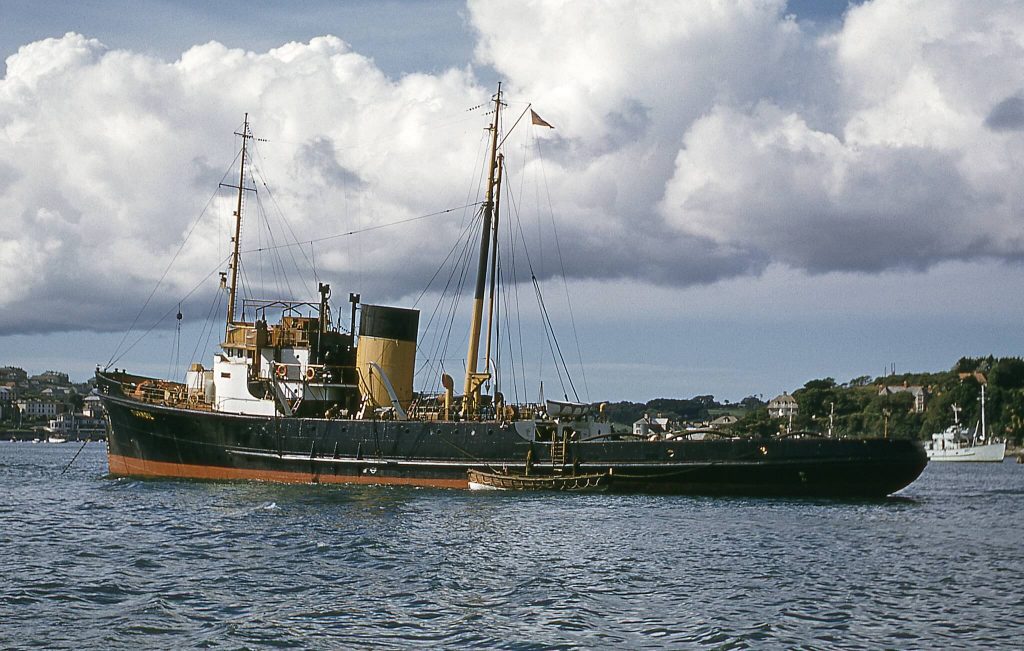

In 1951, an American general cargo vessel, the Flying Enterprise of 6,711 tonnes, set out on passage from Hamburg to Baltimore. The vessel carried a large cargo of pig iron, coffee, bone meal, peat moss and a mysterious 71.8 tonnes of unidentified cargo.
In late December of that year, during 70mph hurricane force winds, the Flying Enterprise was forced port side and failed to correct herself. It is thought that the large cargo of pig iron shifted, creating a considerable stress crack across her upper deck, flooding her forward holds.
Several ships answered an SOS, and two US Navy transport vessels rescued the ten passengers and 35 crew. The storm prevented the lifeboats from getting close to the ship, so passengers had to jump into the sea and swim to the crafts.

Map showing the journey of the Flying Enterprise.
Captain Carlsen refused to leave his ship until either the sea had claimed her or she was back to the safety of the shore. A 1,136 tonne salvage tug from Falmouth, Turmoil, was called out to continue the rescue operation. By the time the tug had arrived, it was impossible to attach a tow.
In frustration, the Turmoil’s mate, Kenneth Dancy, bravely leapt aboard the Enterprise to help Carlsen. The ship continued to list and was now drifting at a list of 60 degrees. By January 5, the weather had calmed enough to secure a tow line. The decision was then made to tow the ship into the safety of Falmouth Harbour.

The Turmoil and the Enterprise.
With less than 50 miles to go, the tow line parted in another gale, and the Enterprise was left drifting, now listing at an angle of 80 degrees. Captain Carlsen remained indignant that he would not abandon the ship until she was resigned to the seabed.
By this stage, both Carlsen and Dancy had spent days on this doomed ship in horrendous conditions, fighting off pneumonia, sleep deprivation and fear.

Turmoil photographed at anchor in Falmouth Harbour. From the Weller collection at NMMC.
By January the 10th, they were strongly urged to abandon ship by the coastguard. They did so by calmly walking along her funnel and jumping into the sea. The pair swam to safety, collected by Turmoil. Shortly after, the ship disappeared into the depths of the ocean.
Carlsen was awarded a Lloyd’s silver medal for his bravery and efforts to save his ship. Both Carlsen and Dancy returned to a hero’s welcome in Falmouth and the rest of the world.
In 1960, the Italian salvage company Sorima conducted salvage operations, recovering over $210,000 in cash. However, because of a confidentiality agreement, they have been unable to disclose who paid for the salvage and the exact description of the cargo recovered. Most investigations point to a consortium of Swiss bankers being responsible for the salvage operations.
Some thought the ship contained zirconium, intended for use in the first nuclear submarine USS Nautilus, but registered as pig iron.

National Maritime
Museum Cornwall Trust
Discovery Quay
Falmouth Cornwall
TR11 3QY
View Map
See our opening hours
Tel: +44(0)1326 313388
Email: enquiries@nmmc.co.uk